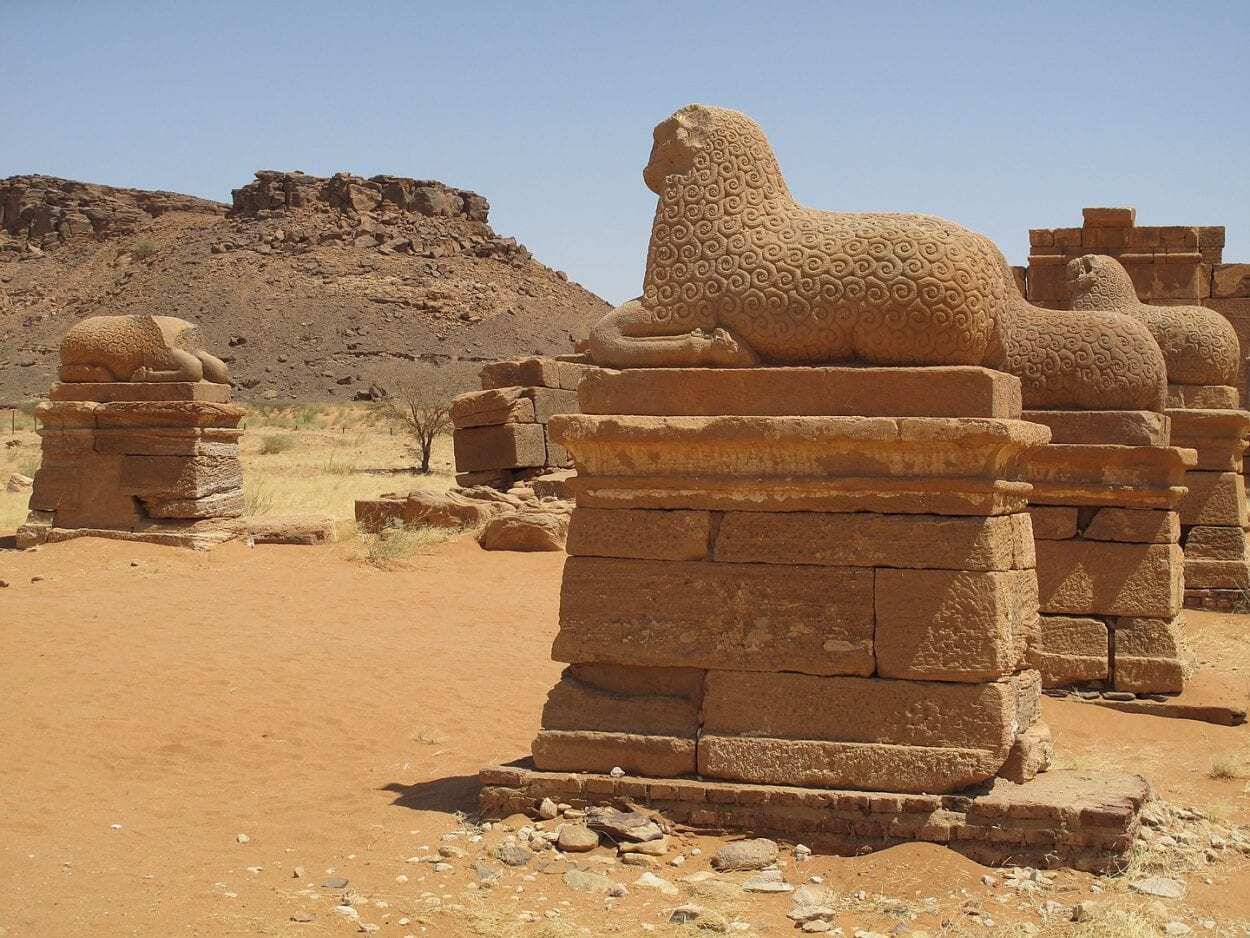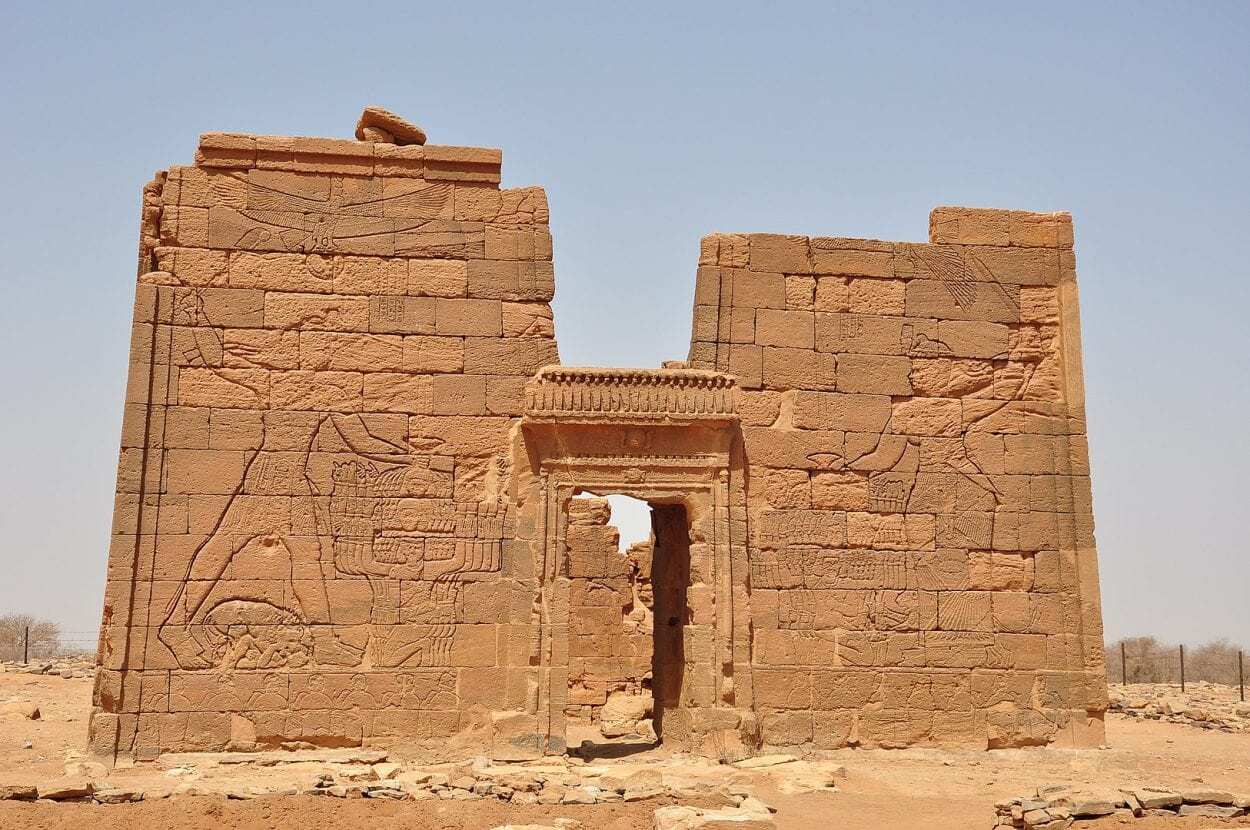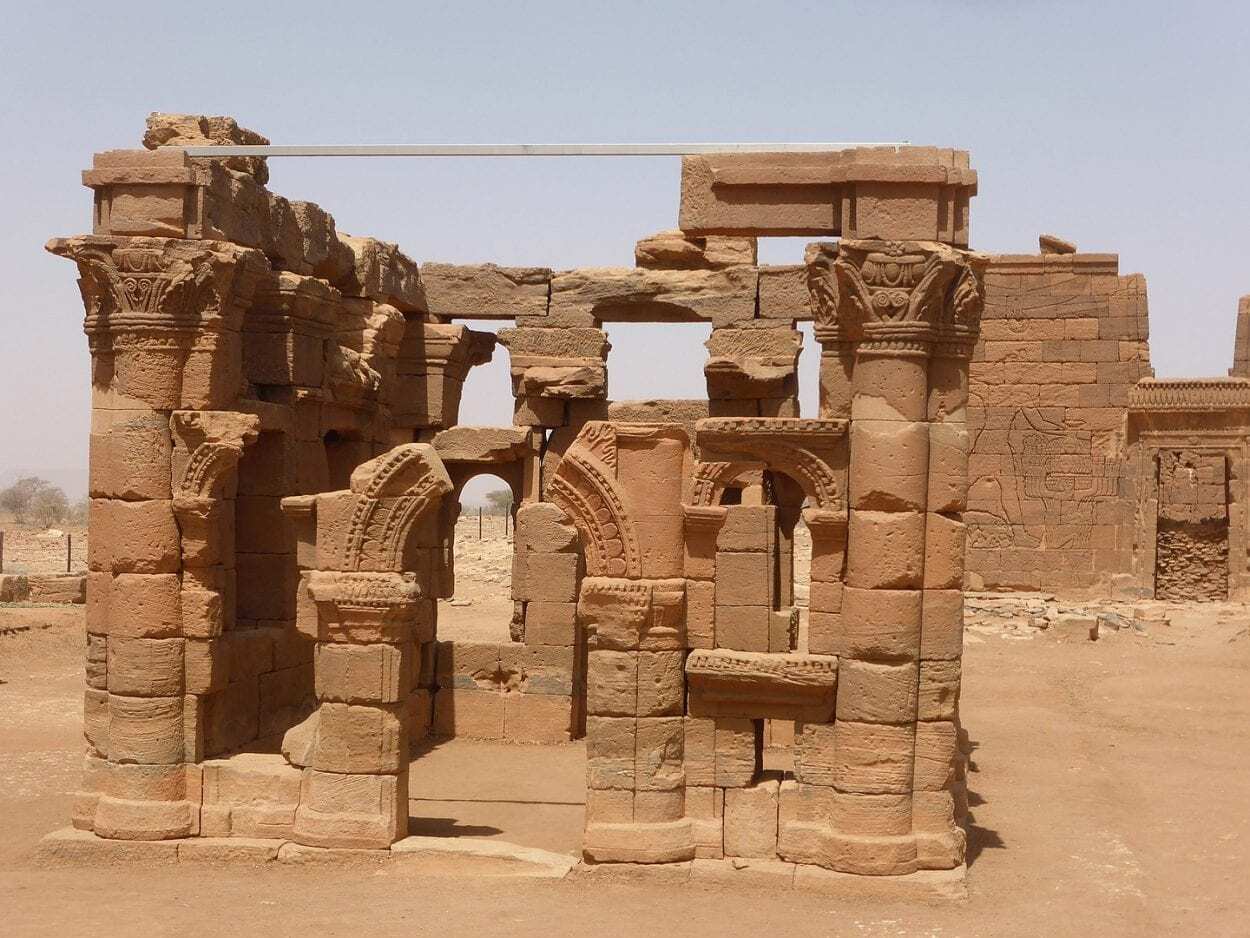Naqa – The Meroitic City
Related Articles
Naqa, also called Naga'a, and presently referred to as the El-Moswarat Andel-Naqa'a Archaeological Area was one of the ancient cities of the Nubian Kingdom of Kush, located on the east bank of the River Nile in Western Butan (historically called the Island of Meroë) in Sudan.
The Island of Meroë consists of three separate sites, Meroe, the capital and royal city of the Kushite kings, Musawwarat es-Sufra, which served as a ceremonial temple complex, and Naqa.
The Kingdom of Kush emerged after the disintegration of the New Kingdom of Egypt during a period known as the Bronze Age Collapse. The Kushite King Kashta and his successor, Piye, took advantage of the instability in Egypt to launch a series of campaigns, eventually conquering their neighbours, and pronouncing themselves the Pharaohs of the 25th dynasty.
The Nubian Pharaohs created a revival in Egyptian culture, in both religion, art, and architecture, including a new phase of pyramid building not seen since the "Age of the Pyramids" during the Old Kingdom.

Naqa was founded at the foot of the Jebel Naqa mountain to serve as a religious centre during the Meroitic period, comprising of the First Meroitic Period (542–315 BC), the Second Meroitic Period (3rd century BC), the Third Meroitic Period (270 BC-1st century AD), and the Fourth Meroitic Period (1st century-4th century AD). The kingdom began to decline around AD 300, possibly due to a collapse of internal trade with the Nile valley states, with archaeological evidence pointing to an economic and political decline.
Among the many structures at Naqa, the most significant in the city is the Roman Kiosk, and the Amun and Apedemak temples.

The Temple of Amun was founded by King Natakamani in dedication to Amun, an ancient Egyptian deity who appears as a member of the Hermopolitan Ogdoad. Outside of Egypt, Amun (pronounced as Amane or Amani in Nubia) was worshipped through to classical antiquity, most notably where he remained a national deity at Meroë.
The temple consists of an outer court and colonnade of rams, that leads to a hypostyle hall containing the inner sanctuary. The design and relief carvings are reminiscent of the Temple of Amun at Jebel Barkal in Northern State, Sudan, and the Karnak Temple Complex in Egypt, commonly known as Karnak.

To the west of the Temple of Amun is the Temple of Apedemak (or the Lion Temple), which is dedicated to Apedemak, a lion-headed deity considered the war god of Kush. The architecture and artistic style of the temple is certainly influenced by Ancient Egyptian design, which also includes depictions of Isis, Mut, Hathor, and Amesemi.
The temple also marks a fusion of cultures with the Kushites, evident by depictions of King Natakamani, Queen Amanitore, and Apedemak who is represented by a snake emerging from a lotus flower) in its construction.
This cultural fusion is none more apparent than the Roman kiosk, a small temple structure dedicated to Hathor that is a juxtaposition of architectural and decorative elements incorporating Pharaonic Egypt, Greece, and Rome, as well as from Kush itself. The temple has an Egyptian entrance, topped by a lintel with a row of sacred uraeus (cobras), and columns with Corinthian capitals, and arched windows in the Roman style.
Header Image Credit : LassiHU – CC BY-SA 4.0
No comments:
Post a Comment